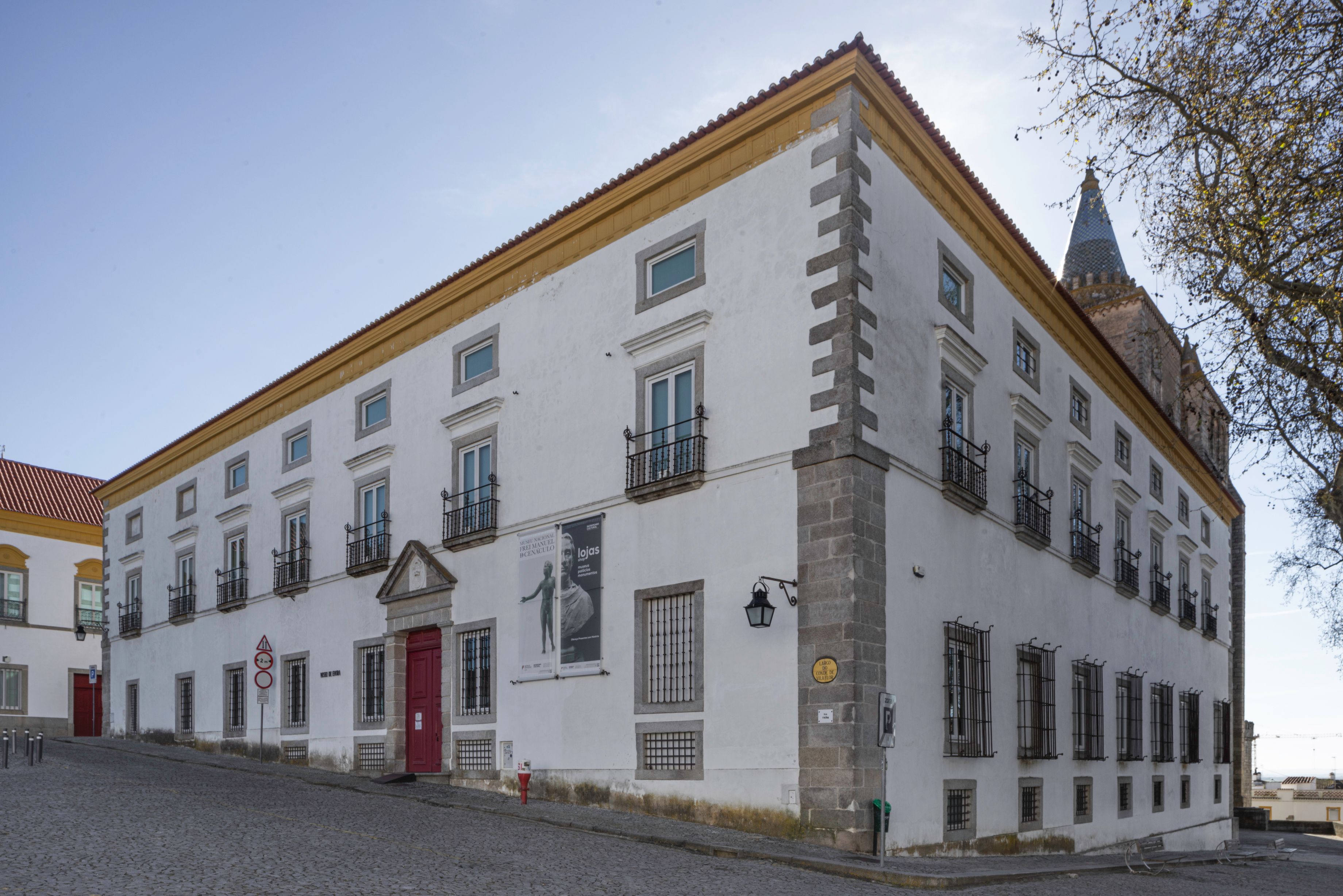It is located in a privileged space in the centre of Évora, a World Heritage city, having in its genesis the collection of Friar Manuel do Cenáculo (1724-1814), an influential intellectual of the Marquis de Pombal period, an art collector and one of the pioneers of archaeology in Portugal.
It was promoted to National Museum in 2017, proof of the value of its collection, housing some of Portugal's “national treasures”, such as the Triptych of the Passion of Christ, painted in enamel by Nardon Pénicaud in the 16th century, and the imposing Flemish Altarpiece (c. 1500), the largest and one of the most important sets of Flemish painting in Portugal.
From the collection of twenty thousand pieces, we would like to highlight a collection that allows us to trace the history of ancient Portuguese painting (c. 1410), by Álvaro Pires de Évora, the Tríptico do Bom Jesus de Valverde (1544), by Gregório Lopes, or São Jerónimo, Santo António e São Dinis, by Diogo de Contreiras (16th century), and works by important Portuguese-Flemish painters such as Francisco Henriques and Friar Carlos. In the sculpture collection, the architectural elements from the city's monuments and important examples of tombs from the 14th to the 18th centuries stand out, with emphasis on the works attributed to Nicolau de Chanterene (first half of the 16th century) or the tomb of Fernão Gonçalves Cogominho (c. 1364).
The collections showcase important nuclei of goldsmithing, numismatics, naturalia (exotic objects of the natural world) and archaeology, the latter three consisting essentially of pieces gathered by Archbishop Frei Manuel do Cenáculo. It is also worth mentioning the Leonor Pina collection, with the fantastic collection of Anta Grande do Zambujeiro, and the so-called Hospital collection, with findings referring to assorted tapirs in the municipality of Évora, Herdade das Casas, Castelo da Lousa and Castelo do Geraldo.
Since 1917, the museum expanded to the adjoined Church of Nossa Senhora das Mercês, a 17th-century building that once corresponded to the Decorative Arts section of the Museum, now closed for conservation purposes.
